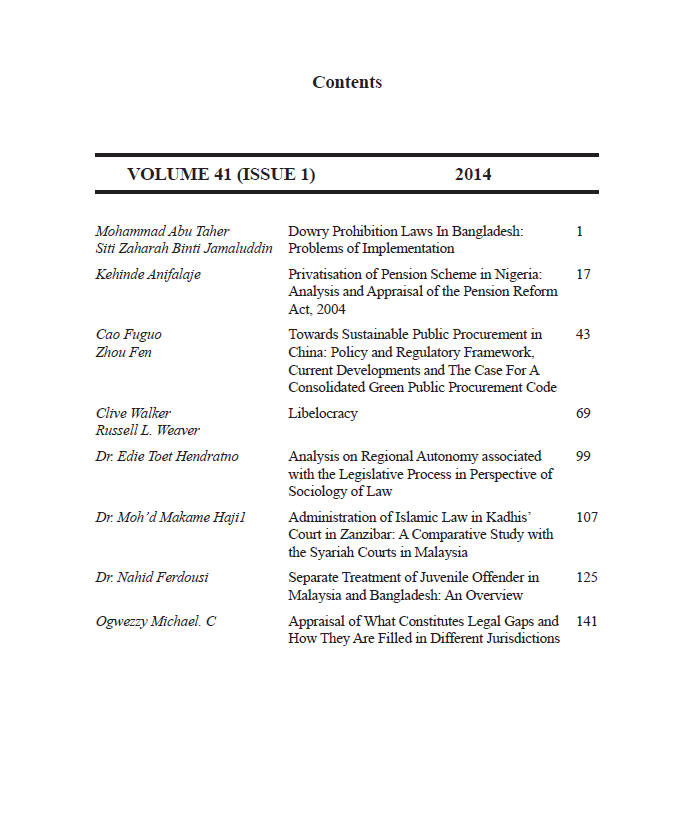Appraisal of What Constitutes Legal Gaps and How They Are Filled in Different Jurisdictions
Abstract
Legal gaps are gaps in law that results from the legislator’s mistake, short-sightedness, carelessness or tardiness. In Nigeria and other jurisdictions, the following types of legal gaps are distinguished: insufficiency, that is where the law fails to make rules when it should do so, inconsistency meaning that the law contains contradicting rules, indeterminacy: the rules of law are unclear, axiology legal gap: the rules of law contradict moral order. Legal gaps can be resolved by the following tools: analogy: resolving the case in question based on a similar case to which there is an applicable rule; broad interpretation: interpreting the rule applicable to the similar case in such a way as expanding it to the present case as well; exercising discretionary power when determining the facts of the case. In another perspective and even much broader definition implies that a legal gap exists when the norms in force issued by the bodies with legislative power do not contain any provision by which the judge could resolve the case in question and under this circumstance the weight of evidence adduced by the parties will be placed on the scale of justice to see where the weight will tilt to. Gaps in a legal system such as “logic legal gaps” can be filled when the judge can deduce the applicable norm by way of pure logics. In the case of “alternative legal gap” which implies where the law provides more than one applicable norms without specifying which one is to be used in resolving a particular legal dispute and “judgement legal gap”, in these situations, the judge is to complete the law on the basis of moral judgment. From the above propositions, this paper will do an “appraisal what constitutes legal gaps and how they can be filled under different jurisdictions”. This paper is therefore intended to further study the meaning of gaps in a legal system, how these gaps could be recognized and whether their existence is a precondition for equitable activity. Thereafter the author examine the processes involved in filling the gaps by considering established procedures and hierarchical sources to be referred to in the process of filling the gaps that exists in law.



